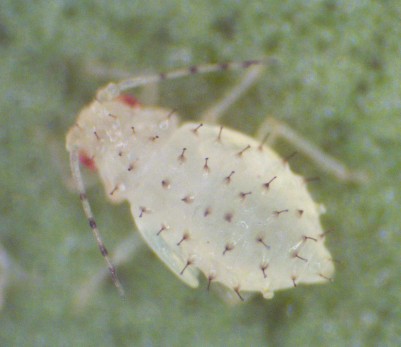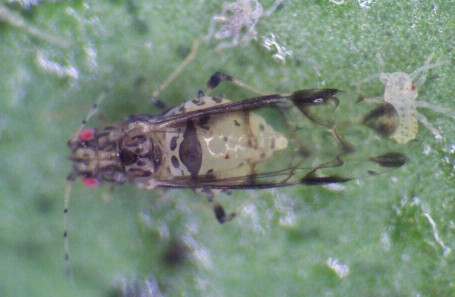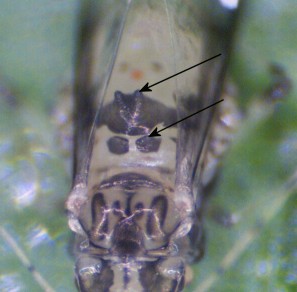Crapemyrtle Aphid
 Scientific Name
Scientific Name
Tinocallis kahawaluokalani
Hosts
Crape myrtles.
Symptoms
Crapemyrtle aphids were first discovered in Hawaii and are the only significant insect pest of crape myrtles in the Oklahoma. Like most aphids, these insects damage crape myrtle by inserting mouthparts into soft tissue and extracting plant sap. Heavy infestations can distort leaves and stunt new growth. It feeds on the underside of crepe myrtle leaves and on twigs and is inconspicuous except for the large amounts of honeydew that it excretes. Drops of honeydew fall from the aphids onto leaves and stems below. A sooty mold grows in the honeydew and appears as a black staining or powdery coating on leaves and stems which, may block light from the leaves and lead to premature foliage drop.
Life Cycle
 Very little information is available on the biology of the crapemyrtle aphid. In Oklahoma,
this pest is found on the foliage of crepe myrtles from May through September with
peak populations during July and early August . Both winged and wingless forms are
present during these months.
Very little information is available on the biology of the crapemyrtle aphid. In Oklahoma,
this pest is found on the foliage of crepe myrtles from May through September with
peak populations during July and early August . Both winged and wingless forms are
present during these months.
Description
 Pale yellowish green with black spots on the abdomen, the winged adult is just over
1.5 mm long. It has dark-tipped antennae and two double-pronged humps on the abdomen.
The wingless adult is also yellowish green with bumps on the body, dark antennae,
and dark hairs. Except for its smaller size and lighter pigmentation, the nymph resembles
the wingless adult.
Pale yellowish green with black spots on the abdomen, the winged adult is just over
1.5 mm long. It has dark-tipped antennae and two double-pronged humps on the abdomen.
The wingless adult is also yellowish green with bumps on the body, dark antennae,
and dark hairs. Except for its smaller size and lighter pigmentation, the nymph resembles
the wingless adult.
Control
Please contact your local county extension office for current information.
